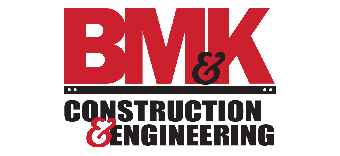The Power of Partnering in the Facilities Design Process
Overview
– We have all seen construction projects where adversarial attitudes have resulted in misdirected energies, and sometimes, with the high cost of the claims and litigation process. The partnering process changes mindsets. Partnering can help all of us in the design and construction process redirect our energies and focus on the real issues associated with achieving our project goals with our client’s success at the forefront. Partnering requires a major commitment by all project parties to work in a team environment that results in a “win-win” relationship. Partnering can and is changing our industry one project at a time. It is an approach which can produce outstanding results for our industry. Your firm’s partnership with BM&K truly means working together to achieve common goals.
Benefits of Partnering
Partnering can result in a significantly higher level of quality on a project and can significantly increase the probability of timely and on-budget completion of the project and can reduce the risk of claims and litigation. This makes clients happier and leads to repeat business for all involved parties. Partnering also builds relationships between firms, and creates a trusted partner in business.
To the Owner
The highest objective in any project is the success of the client. The owner of a design and construction project benefits the most from a relationship between the architecture firm and construction firm. This is a win-win for all profiting parties in the facilities design process, because a satisfied client can lead to future business.
- The client has greater control of schedule and cost through close communication and regular evaluation of project progress.
- There is a higher quality through focusing on mutual goals by team members who are not sidetracked by adversarial relationships.
- A partnership between those involved in the facilities design process creates the potential for a totally claim free project.
- A bonus of partnership is the chance of greater innovation through open communication and trust.
- Finally, there is a higher profit potential for all participants resulting in a more efficient project delivery process.
To the Architecture Firm
- The architecture firm benefits from a greatly reduced exposure to liability for document deficiencies through early review.
- Next, there is a cooperative effort to resolve problems early in the process which reduces the chance of involvement in claims and litigation.
- Finally, architecture firms enjoy reduced administrative costs and increased profit potential.
To the Construction Firm
- The construction firm benefits from a reduced risk of delays and cost overruns by early and active involvement in problem resolution.
- There is increased productivity by the elimination of adversarial relationships as well as a reduced exposure to claims litigation through early and low level resolution of project issues.
- Greater profit potential.
To Subcontractors and Suppliers
As with any other affiliate in this process, the relationship with subcontractors and other suppliers is important. A partnership between the architecture firm and the construction firm they are working with on a project benefits them in the following ways:
- There is an improved cash flow due to the elimination or reduction of disputes resulting in withheld payments. They also have greater involvement in the decision making process as an active team member in the project.
- A reduced or eliminated chance of claims and litigation through early project dispute resolution.
- And, finally, increased profit potential through a “win-win” attitude from all parties.
Elements of Partnering
The essential elements of a partnering agreement:
- Commitment to partnering by the top management of every organization involved in the project.
- A relationship built on trust between all parties through personal relationships and open communication with mutual sharing and understanding of each party’s risks and goals.
- A partnering charter developed jointly by all parties to the project which identifies specific mutual goals and objectives of the partnering participants for continuous evaluation and review against the agreed upon mutual goals.
- Timely resolution of any disputes at the lowest level possible during the project.
How Do We Implement a Partnership With BM&K?
Partnering requires considerable time, effort, and commitment at all stages of a project. We at BM&K hope to partner with your firm on future projects and build relationships of mutual trust, commitment to shared goals, and open communication among the client, architecture firm, and construction firm. We would love to have the opportunity to talk to you about how we can partner with your architecture firm on future projects.




